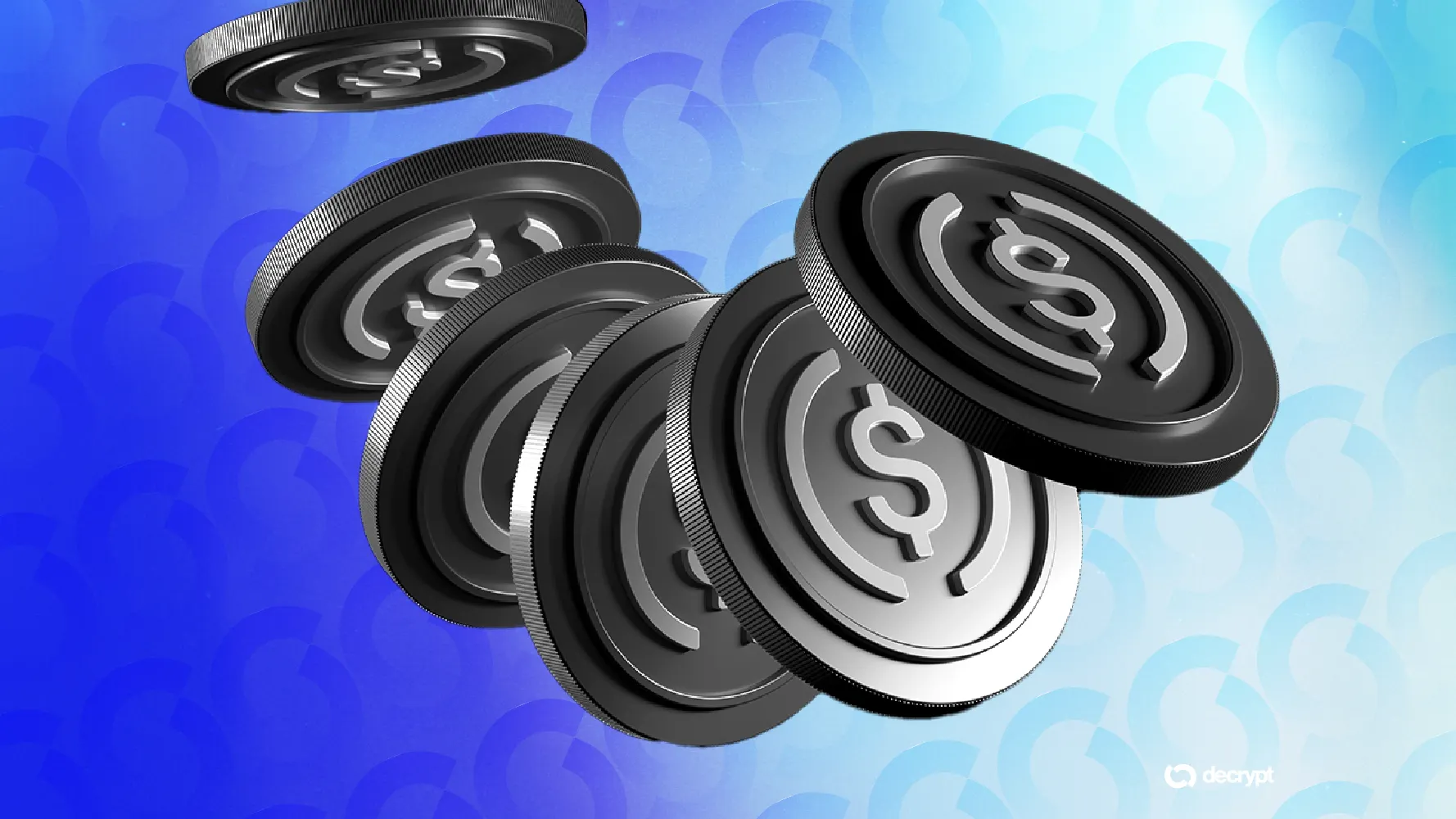In brief
- Circle's stock dropped 6% after Compass Point initiated coverage with a neutral rating and $205 price target.
- Analysts believe Circle trades at over 100x EBITDA as investors bet on stablecoin growth, not near-term earnings.
- USDC's market share has declined from 34% in 2022 to 27% in 2025, with concerns about increased competition after potential stablecoin legislation.
USDC issuer Circle slipped 5.5% early Tuesday as Compass Point, the equity research arm linked to the middle-market investment bank of the same name, initiated coverage with a neutral rating.
Compass Point gave the company's shares—which trade on the New York Stock Exchange under the CRCL ticker—a $205 price target. The stock opened at $238.46, or 9.4% lower than its Monday closing price of $263.40.
The stock has since struggled to pull even with its Monday close.
Compass Point reasoned that although USDC technology and liquidity give it long-term advantages, Circle is so far limited to crypto players as distribution partners.
Circle's USDC distribution partner list is long, but is indeed limited mainly to fellow crypto firms. Its main partner has always been Coinbase, which co-founded USDC through the Centre Consortium in 2018 and receives 50% of interest earned on the reserves backing the U.S. dollar-backed stablecoin.
Late last year, Circle entered into a strategic partnership with Coinbase's largest competitor. "Binance will make USDC more extensively available across their full suite of products and services," the company wrote in a December blog post.
But the company has had to pull support from some networks. Last February, the company cut support for USDC on Tron, citing "risk management" concerns.
USDC also recognizes crypto exchanges Bybit, Bitget, and Bitstamp as on- and off-ramp providers.
Research analysts Ed Engel and Joe Flynn reasoned that the stock trading at over 100 times EBITDA, or earnings before interest, taxes, depreciation, and amortization, makes them think investors are using it to bet on the future growth of stablecoins—not near-term earnings.
"To justify CRCL’s valuation, investors must forecast bullish [total addressable market] and market share assumptions. We believe stablecoins can penetrate ~10% of U.S. M2 by 2030, implying a $2 trillion addressable market," the analysts wrote in a report shared with Decrypt. "USDC has 24% market share, and we model 20-30% longer-term share alongside new competition and lower share from USDT."
The M2 is shorthand for money that's liquid, but not as much as actual cash. It includes savings and money market accounts, and short-term certificates of deposit. As of April, the Federal Reserve estimated U.S. M2 at about $21.9 trillion, up from $21.7 trillion in March.
The analysts noted that progress of the GENIUS Act in D.C., which could set up a regulatory framework for U.S. dollar-backed stablecoins, is both bullish and bearish for Circle.
"We expect competition to accelerate after stablecoin legislation passes," they wrote. "This influx of competition could reduce long-term market share expectations and pressure CRCL shares in 2025."
Other observers have also expressed skepticism about Circle's short-term growth potential.
James Toledano, the chief operating officer at Unity Wallet, said he's been wary of CRCL's upward momentum after its listing earlier this month.
"Circle’s surge reflects a shifting market mood, but the fundamentals still raise questions," he told Decrypt. "Despite a 750% post-IPO rally, USDC’s market share has been declining, and Circle’s revenue depends heavily on high interest rates. A Fed pivot could sharply undercut its income."
USDC's market share has fluctuated as users mint and burn tokens.
In May 2022, USDC nearly pulled even with its largest competitor, Tether, and had command of roughly 34% of the stablecoin market. In early 2025, USDC accounted for roughly 27% of the stablecoin market, according to CoinGecko data.
Edited by Stacy Elliott.

